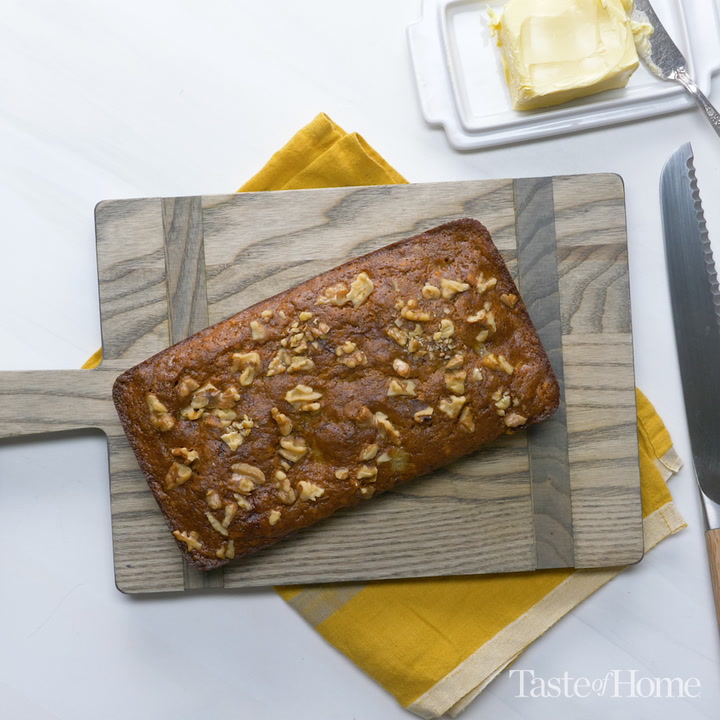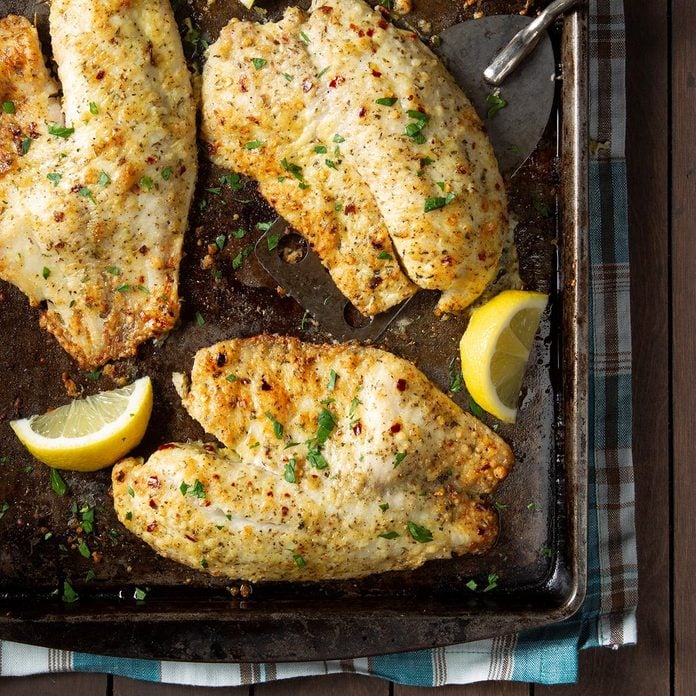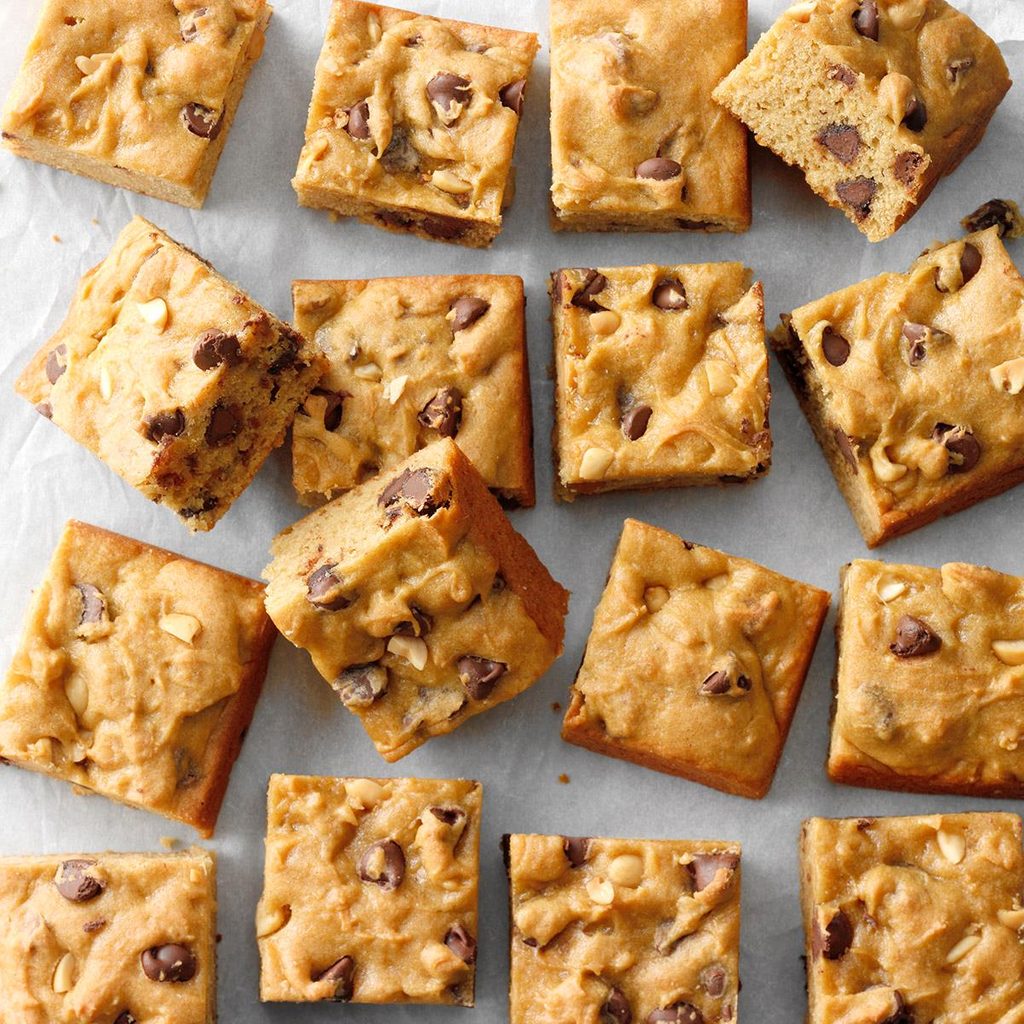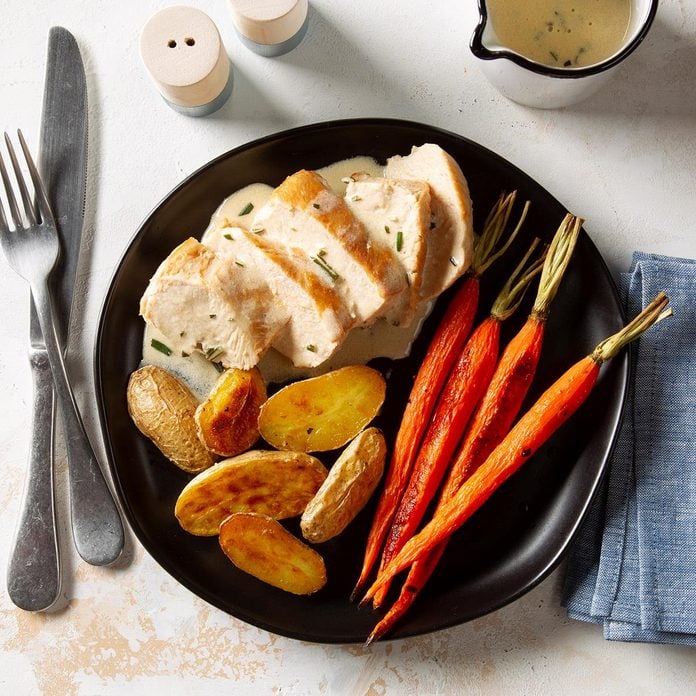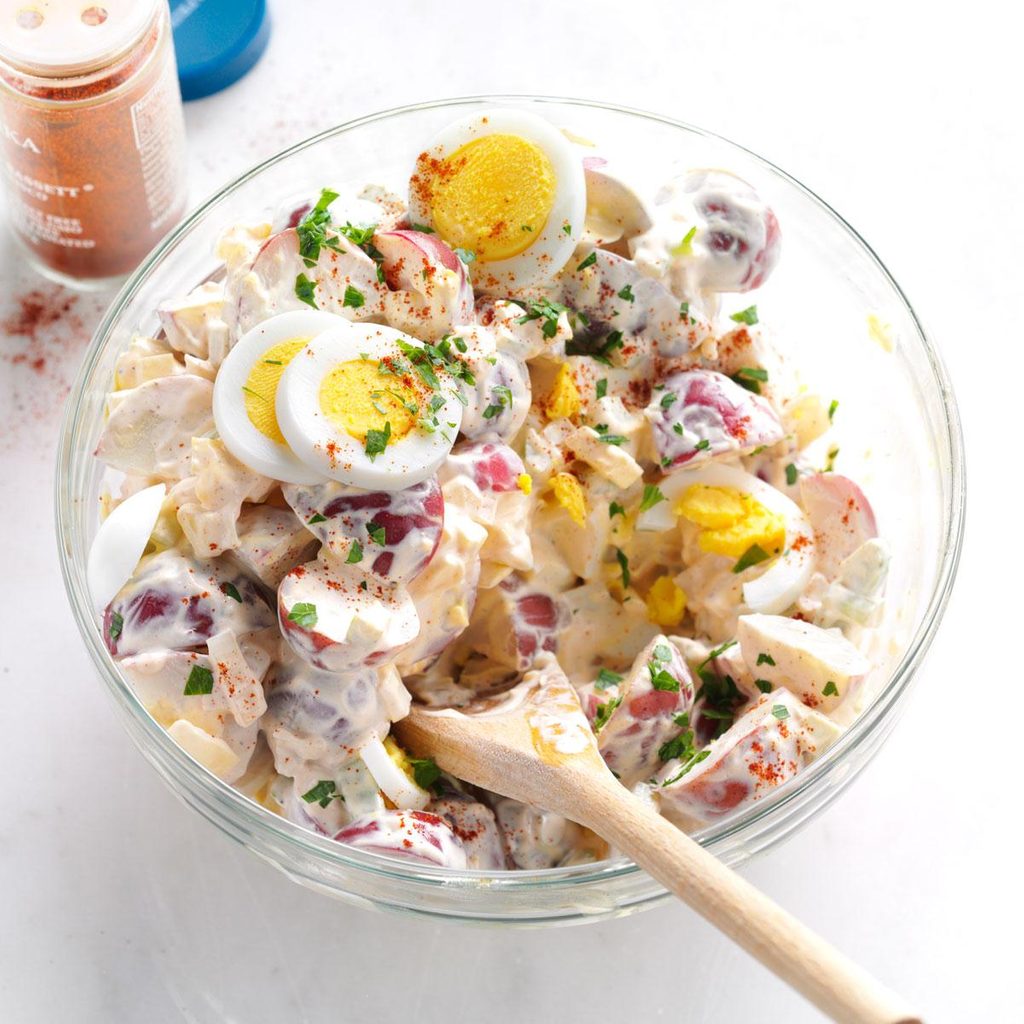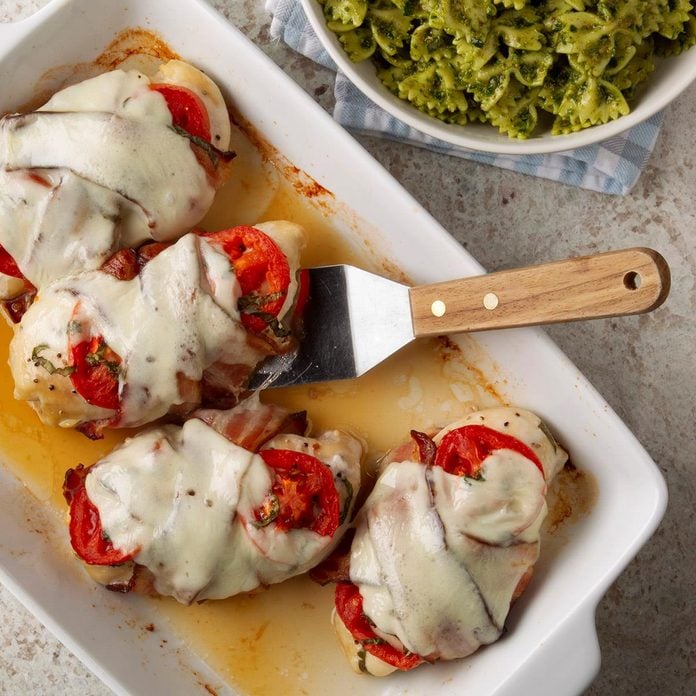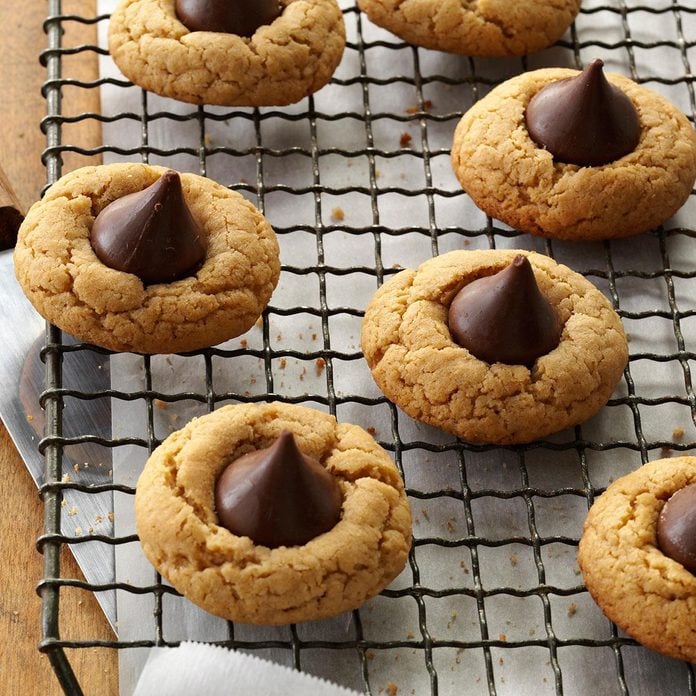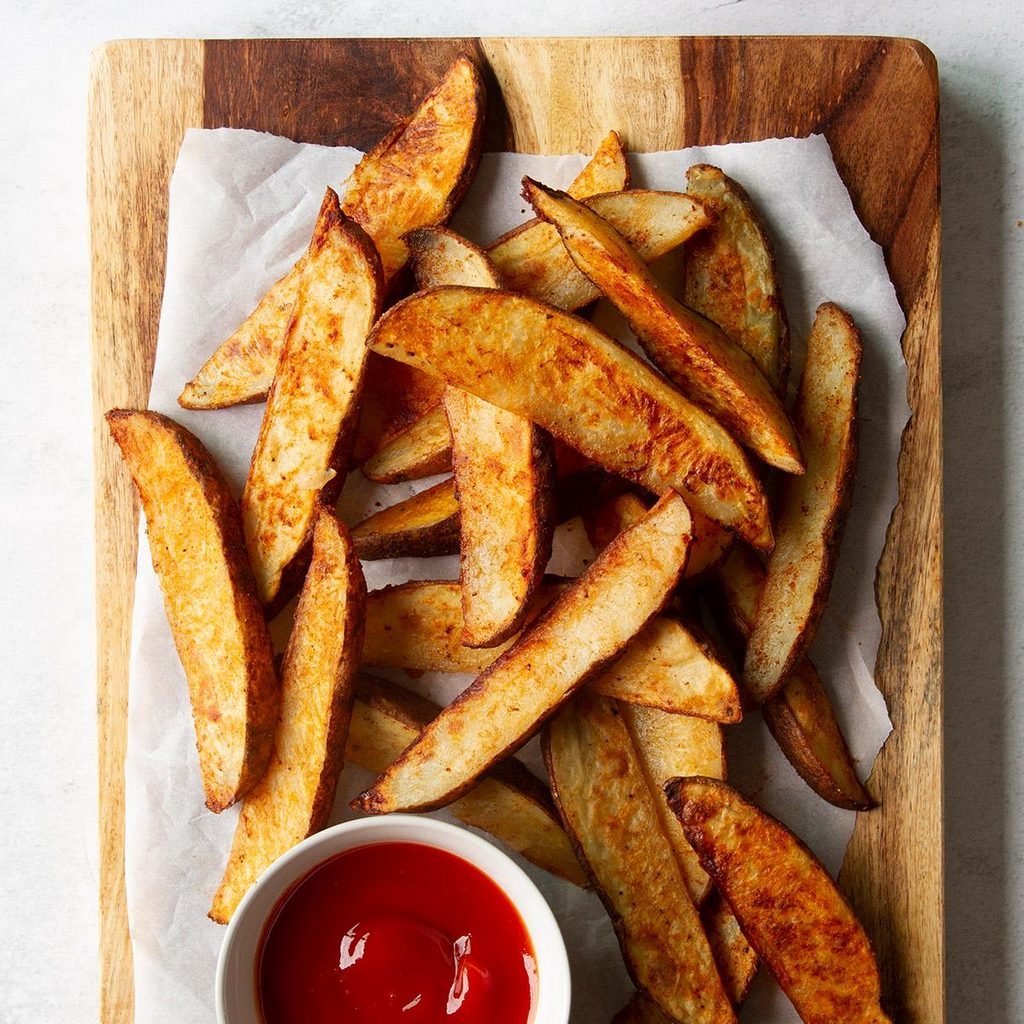From baking cakes to thickening sauces, here's how to covert a recipe to a gluten-free version you'll love.
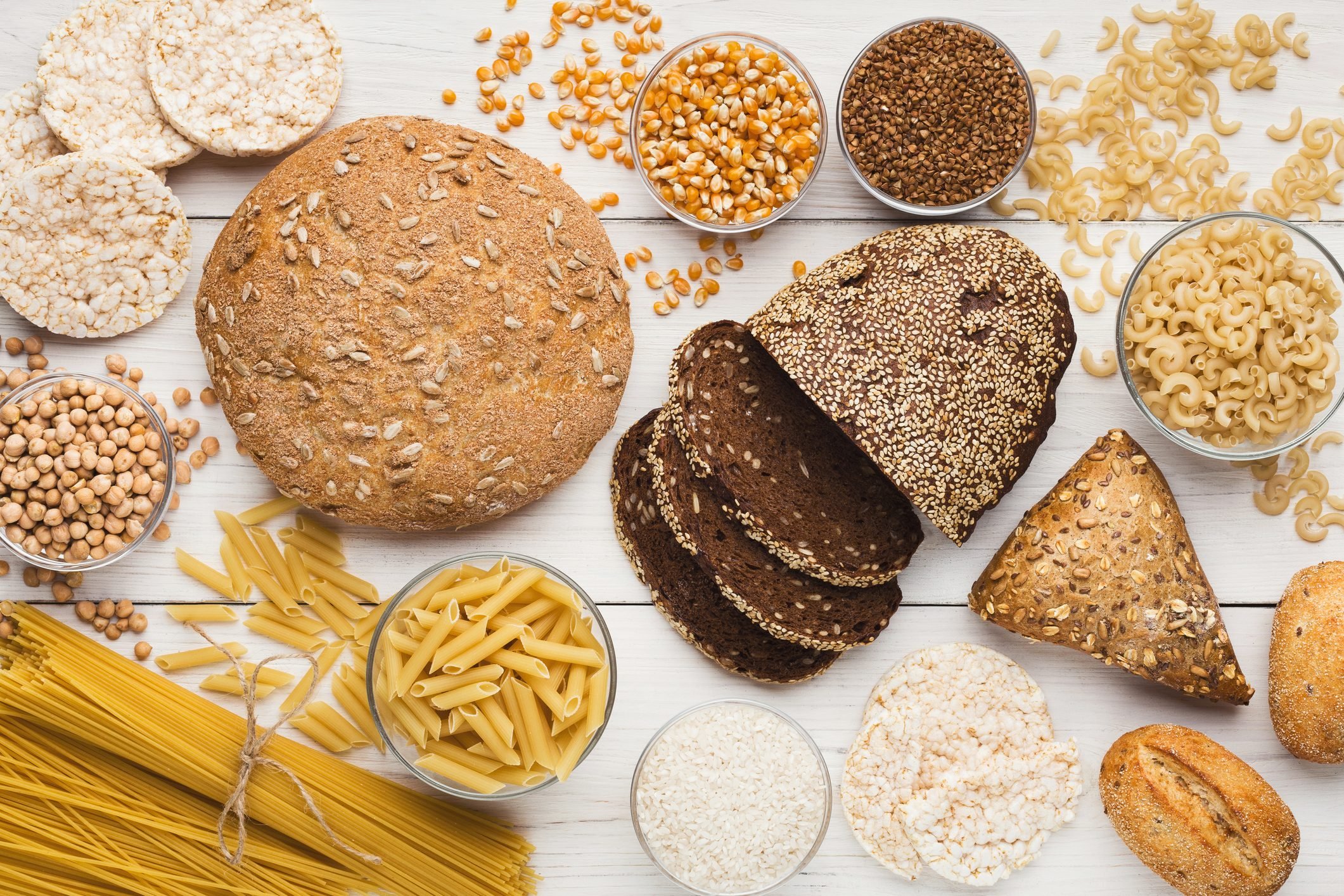
How to Make Any Recipe Gluten-Free

Going gluten-free doesn’t mean you have to say goodbye to bread, pasta and fried chicken. By studying up on flour to gluten-free flour conversions and doing some simple swaps, you can learn how to make a recipe gluten-free and continue eating all your favorite dishes.
1. Swap All-Purpose Flour for a Gluten-Free Flour Blend
No single gluten-free flour can replace all-purpose wheat flour. Gluten-free bakers mix multiple flours to mimic the protein, fiber and starch content of wheat flour. These “all-purpose” mixes can often replace regular all-purpose flour at a ratio of 1:1.
To make your own, whisk together our homemade gluten-free flour mix, which uses white rice flour, potato starch flour (also called potato starch) and tapioca flour (also known as tapioca starch). If you prefer a store-bought blend, here are our picks for the best gluten-free flour blends.
Most types of dense or less structural baked goods are extremely easy to adapt to gluten-free. Think: muffins, quick breads, pancakes, brownies, pound cakes and cookies. Other bakes are slightly trickier to make gluten-free, especially doughs that demand structure, like airy, lofty cakes. For these batters, make sure your gluten-free flour mix includes a binding agent, which mimics the “stretchiness” of gluten. Xanthan gum and guar gum are common binding agents. And, if your recipe is supposed to turn out light and cake-y, look for a flour mixture with a higher ratio of white rice flour, tapioca starch or potato starch.
One major caveat: Trying to convert a gluten-containing bread recipe to gluten-free is not recommended. Along with added binding agents, gluten-free breads need extra protein, fat and liquids. On top of that, many techniques of gluten bread baking, like kneading, pounding down and multiple rises, simply don’t translate to gluten-free bread. Fear not, as there are many excellent gluten-free bread recipes.
2. Choose Your Flour Blend Based on the Recipe

Gluten-free flour mixes are convenient, but they’re generally a bit bland, relying on white, starchy flours. As you gain experience baking gluten-free, you’ll likely develop preferences for different mixes based on their flavors, textures or health benefits. The world of gluten-free flours is wide. Here’s a quick guide:
Aim for Roughly Half Whole Grain, Half Starch
For most recipes, 40% whole grain and 60% starch is a good ratio. You can combine as many flours and starches as you like, using that ratio as a guide. A simple example would be mixing brown rice flour + potato starch + tapioca. A more complex example is brown rice flour + millet + oat + potato starch + tapioca.
Denser baked goods need a blend with more whole grain than starch. The opposite is true for lighter bakes: They should have a higher amount of starch.
The Most Versatile Flours and Starches
- Sorghum, millet, oat and brown or white rice flour
- Tapioca starch (may also be labeled tapioca flour), potato starch and corn starch
Special Exceptions: Use Only When Called For
- Coconut flour is extremely absorbant and can throw off your recipe.
- Almond flour and other nut flours are crumbly and a bit oily.
- Buckwheat and teff flours have a strong, slightly bitter flavor.
To find substitutes for cake flour, semolina and other types of flour, Taste of Home senior food stylist Shannon Norris recommends consulting King Arthur Baking.
Editor’s Tip: Always be precise when you measure flour. Spoon the flour into a measuring cup, then scrape the excess off with a butter knife to level it.
Sometimes the best way to make a gluten-free bake is to pick a recipe that doesn’t have flour at all. There are so many delicious flourless desserts to try, like flourless peanut butter cookies or flourless olive oil chocolate cake. Of course, you’ll want to check the entire ingredient list to make sure everything you’re including is gluten-free.
3. Add Extra Moisture to Avoid Dry Bakes
A common problem with gluten-free baking is that gluten-free bakes have a tendency to turn out a little dry. Certain gluten-free flours, like oat flour, need more liquid than regular flour. To account for that, try swapping out the water in your recipe for milk or buttermilk. The extra fat helps add moisture.
Another trick is to add an extra egg, which helps bind while also contributing moisture.
4. Make Gluten-Free Breading and Batters
Following a gluten-free diet doesn’t mean you have to give up things like chicken parmesan or Friday night fish fry. In many recipes, you can use a gluten-free all-purpose flour mix or corn starch in place of wheat flour when breading. Get to know if cornstarch is gluten-free.
Gluten-free panko bread crumbs are a good substitute for panko bread crumbs. Or go homemade: follow our guide to how to make bread crumbs and swap in your favorite gluten-free bread recipe.
Another option is to skip the bread and go for a creative gluten-free coating, like crushed potato chips, pork rinds, corn chips, gluten-free rolled oats, gluten-free croutons, gluten-free crackers, gluten-free Chex or gluten-free Doritos (like in this Doritos chicken tenders recipe—just swap out the flour).
If you’re making a wet batter like in a tempura recipe, try rice flour.
5. Thicken Sauces and Soups Without Flour
You can thicken soups, sauces and more with a cornstarch slurry or bit of arrowroot powder. Catherine Ward, Taste of Home prep kitchen manager, also likes to thicken sauces and soups with pureed roasted vegetables like celery, carrot and parsnip. Add in 2 tablespoons of pureed veggies at a time until you reach your desired thickness.
Check out our guide to how to thicken sauce for more tips.
If you don’t want to worry about making swaps, keep this gluten-free red velvet cake and gluten-free soup recipe in mind.
6. Replace Beer with Gluten-Free Alternatives
Unless you have gluten-free beer on hand, it might be tough to make swaps in recipes with beer. Taste of Home content director Ellie Martin Cliffe and her husband, Ian Cliffe, own an Irish bar and do plenty of gluten-free cooking and baking at home. Ian recommends using cider, wine or sherry as a substitute for beer, depending on the recipe.
More Tips for Gluten-Free Recipe Conversions

If you don’t have xanthan gum, use…
Arrowroot powder
If you don’t have xanthan gum on hand, use arrowroot powder instead. As a general rule, you want 1/2 teaspoon of arrowroot powder for each cup of wheat flour. Round up the amount of arrowroot powder if the recipe calls for a partial cup of flour.
Flaxseed meal
Adding a “flax egg” to your batter will help bind it. Whisk together 1 tablespoon of flaxseed meal (aka ground flaxseed) with 3 tablespoons of water and let sit for 5 to 10 minutes.
Don’t be afraid to experiment
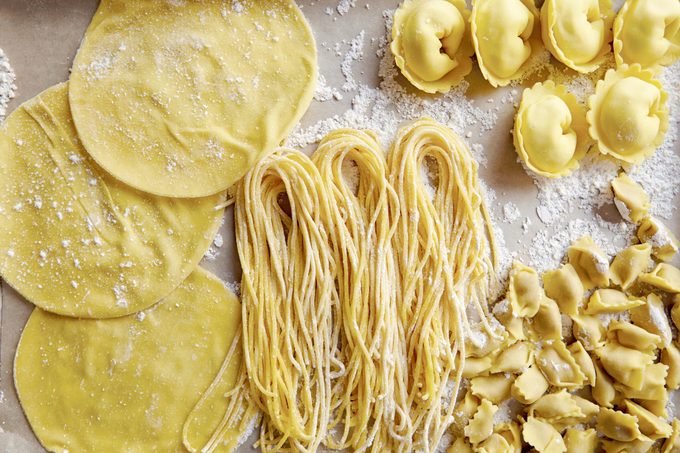
When you’re trying new gluten-free flours and flour blends, other ingredients in the recipe may need to be adjusted. For example, if your gluten-free cake didn’t rise, next time try adding 2-1/2 teaspoons of baking powder for every cup of flour used in the recipe. Some flours may be a bit drier, so add extra liquid, such as water or oil. Gluten-free cooking, and especially gluten-free baking, often takes some trial and error, so be prepared to experiment with different flours and ratios until you find your new go-to gluten-free favorites.






















